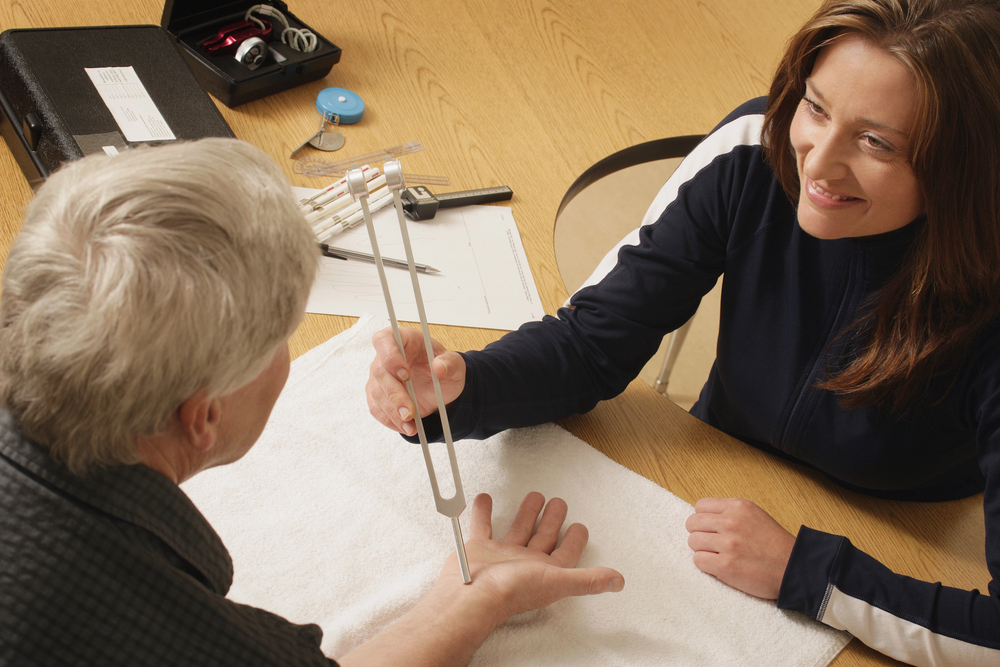
How to Help Your Senior Parents Stay Active (Even if They’re Not into Exercise)
June 9, 2025
What is Speech Therapy and Who Can Benefit From It?
August 7, 2025Life does not always go as planned. Sometimes, health conditions can arise and significantly impact your daily life. This can make things harder. That is where occupational therapy comes in. It helps people face these changes. You will receive support to return to your daily life in the best way possible, even if you are facing a physical or mental challenge. You may need to relearn basic things after an injury.
Alternatively, you may need to find more effective ways to complete tasks if you have a long-term health issue. Occupational therapy provides you with care, advice, and helpful tools as you move forward—Let’s discuss how this process can make a significant difference in your life.
Understanding Occupational Therapy
The profession of occupational therapy is unique among allied health professions. It helps people with daily tasks, allowing them to be more independent. The work is based on both science and care, helping people navigate their day in the best way possible.
Groups like the Occupational Therapy Association guide those who work in this field. Their goal is to help people take part in daily life and the roles that are important to them. Occupational therapy helps people regain abilities or change things around them. This is how they keep their main goal, which is to make lives better. Next, we are going to look even more into what this therapy is about.
What Does Occupational Therapy Mean?

At its core, occupational therapy is about helping people do daily tasks that matter to them. These daily tasks can be things like getting dressed, cooking food, or going to work. It covers anything you do every day that is important in your life.
If you experience difficulties due to injuries or health conditions, an occupational therapy practitioner can assist you. They work with you to get stronger, but also help you with ways to handle problems that are social or mental. The goal is to make sure you can get back to those important activities that you want in your daily life.
Occupational therapy can include modifying aspects of your home, teaching you simple exercises, or helping you manage your emotions. Each person receives a customized plan tailored toa their specific needs. It’s not just about your body getting better. It’s about being able to live your life fully again. Now, let’s take a look at what therapy sessions entail.
How Occupational Therapy Works
Occupational therapy begins with a thorough examination of the challenges you face and the goals that matter most to you. From there, treatment plans are created to meet your individual needs.
Occupational therapists use practical tools and focus on patient care while watching your progress. Recovery does not happen overnight. It requires the right interventions and steady progress. In the next section, we will discuss activities commonly used in these therapy sessions.
Types of Activities Used in Occupational Therapy
Occupational therapy utilizes everyday activities tailored to your individual needs and goals. These are the things that help you develop skills for daily living and increase your independence.
You can find a wide variety of things to do. Some focus on social skills with group time. Others help you work on routine tasks at home. Some of these could be:
- Learning on your own how to cook or get dressed.
- Talking with others while out in public.
- Doing small movement jobs like writing or using tools.
- Working on how your body moves safely with different exercises.
- Getting used to using special tools like wheelchairs.
Therapists assess each person to determine what they need to improve. They find ways that work in your daily life. After working together, they make sure you keep track of your growth all the time.
Tools and Techniques Occupational Therapists Use
Special equipment and innovative approaches can significantly enhance the effectiveness of therapy. Occupational therapists use some tools and methods like these:
- Home modifications, such as ramps or grab bars, can make things easier.
- Adaptive utensils and aids to help with routine tasks.
- Effective interventions, such as exercises that build strength.
- Training in communication skills, so people can talk and connect better.
Therapists work to make every task safe and caring. They are there to support you, whether they bring in special equipment or make home modifications to update your space. Occupational therapists always look for the right interventions and ways to help you do routine tasks, use good communication skills, and live a more independent life.
Who Can Benefit from Occupational Therapy?
Many people utilize occupational therapy services, regardless of their background or identity. The therapy can help those with chronic conditions like Parkinson’sParkinson’s or MS to handle daily life better.
This therapy is also helpful for people who have physical or developmental disabilities. It helps them take part in the activities that matter the most. Occupational therapy helps them learn new ways to move or feel better. These services improve the lives of many. Seniors get a lot of help, too.
Adults and Seniors Receiving Occupational Therapy
Older adults often face some hard times, like dealing with Parkinson’sParkinson’s disease, hand injuries, or carpal tunnel syndrome. There are ways to help with these problems. Occupational therapy provides you with simple steps and support to manage these problems in daily life.
Therapists are there to help seniors maintain their independence and freedom. They do this by using the right exercises and changes at home, which can even lower the risk of falls. Older adults recovering from illness can utilize this support to regain strength and resume their daily routines.
No matter your age or what you’re going through, occupational therapy empowers you to take charge, allowing you to maintain your health and enjoy your life.
What Occupational Therapists Do Every Day
An occupational therapy practitioner does many things each day. They help people get better after injuries or health problems. They build a special area of practice assessments, too. They also work together with occupational therapy assistants to run programs and help clients.
They begin by assessing what each client needs most. They also give therapy in lots of places, which means their work changes all the time. Their main goal is to follow what each patient truly needs every day.
Key Responsibilities of Occupational Therapists
Occupational therapists do many important things. They work to help people in a few key ways:
- They conduct comprehensive patient care checks and make adjustments as needed.
- They develop clear treatment plans tailored to each person’s goals.
- They boost physical mobility with the right exercises or special tools.
- They help people grow socially and emotionally, utilizing strong interpersonal skills.
- They team up with caregivers to help people recover well.
The plans they make and the time they spend with people help everyone become more independent.
Where Occupational Therapists Work
The places where occupational therapists work are wide and cover many different healthcare settings. You will find them in rehabilitation centers and workplaces, helping people find ways to handle everyday tasks.
In therapy offices or outpatient clinics, these therapists assist individuals who struggle with movement. In community settings, they work on social skills and help with employment growth for those with disabilities.
Wherever you see them go, occupational therapists connect with people and offer care filled with kindness.
Final Thoughts
Occupational therapy is important for people of every age. It helps them regain their independence and improves their quality of life. Occupational therapists employ various activities and strategies to help individuals solve problems and adapt to their surroundings. They help kids who have developmental delays. They also give support to seniors after surgery. The work that occupational therapists do is good and makes a difference in people’s lives.
If you would like to learn more about how this can benefit you or someone you care about, you can visit Maplewood Sauk Prairie. Your path to better well-being can begin now!
References:
www.aota.org
www.nbcot.org


